Name HMS Terrible Fate Sold July 1932 Construction started 1894 Length 152 m Draft 8.2 m | Laid down 1894 Launched 27 May 1895 Displacement 12.88 million kg Builder John Brown & Company | |
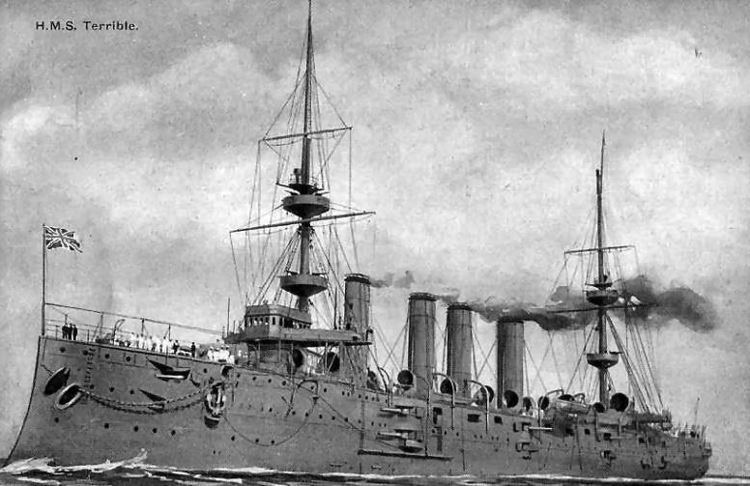 | ||
Renamed Fisgard III, August 1920 Reclassified Training School, August 1920 | ||
HMS Terrible was a ship of the Powerful class of protected cruiser in the Royal Navy. She served with her sister ship, Powerful on the China Station and provided landing parties which fought in the relief of the Siege of Ladysmith in the Second Boer War. Crews from the two ships also took part in suppressing the Boxer Rebellion in China.
Contents
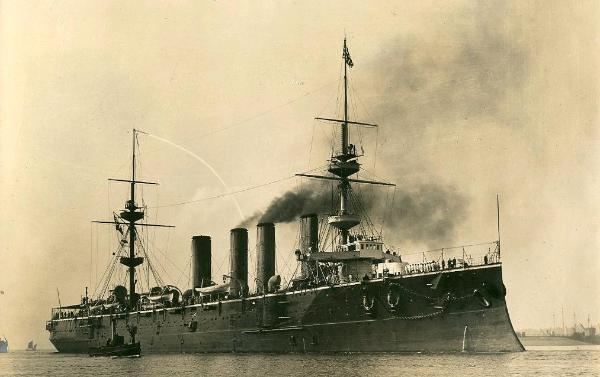
Terrible 1898 Trials
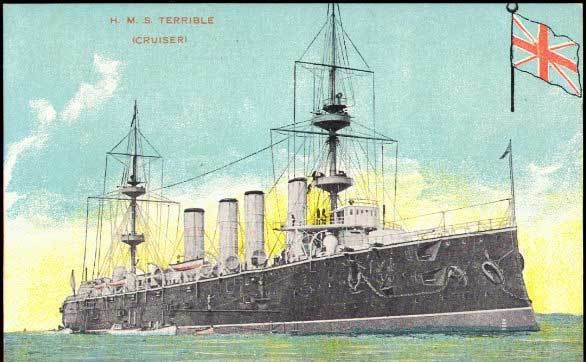
Service history
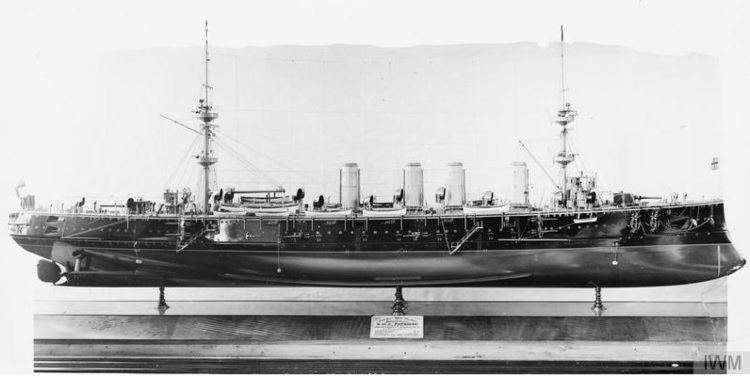
Terrible was built by J.& G. Thomson on Clydebank and launched on 27 May 1895. December 1898 sea trip, Portsmouth to Gibraltar, 12,500 ihp (9,300 kW) = 18 knots (33 km/h) average. Gibraltar to Malta, average 21.5 knots (39.8 km/h).
Boer war and Boxer rebellion
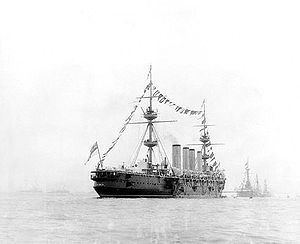
Captain Percy Scott was appointed in command in September 1899, to take the ship for service on the China station. Expecting hostilities to break out in South Africa, Scott managed to persuade the Admiralty to allow him to make passage via the Cape of Good Hope rather than the originally planned Suez Canal route. Terrible arrived at the cape in October to find war imminent. With no threat from the sea, Scott set about determining how he might adapt the navy's guns by mounting them on wheels for use on land as to support the army which lacked any long range artillery and found that its ordinary guns were out-ranged by the Boer artillery. The mountings looked somewhat amateurish, causing the authorities to regard them with some considerable suspicion. However, they proved very effective and the role of two of his 4.7inch guns at the Siege of Ladysmith became a matter of some notoriety. At the end of October Scott was appointed Military Commandant of Durban and arrived in Terrible to take up his appointment on 6 November. Scott's time in South Africa came to an end at the end of March 1900, almost coinciding with the relief of Ladysmith, and the Terrible proceeded on its way to China.
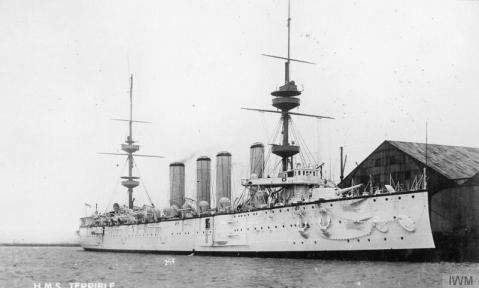
In China Terrible and its crew became involved in the Boxer Rebellion and once more they dismounted the guns to provide assistance to land forces and making a significant contribution to the capture of Tiensin. After hostilities ceased Scott returned to working up his ship's gunnery capabilities, devising novel training aids. After target practice Scott was in the habit of posting his comments on the ship's notice board. On one occasion he had praised nine out of the twelve gun crews but had described the other three as most discreditable. This was somehow picked up by the Press which pointed out that the three gun crews which had been criticised had achieved scores of 41%, a score achieved by no other crew in the Navy using the same guns, the average score being 28%. In the Navy's 1901 prize firing Terrible achieved a score of 80%, the best of any ship in the Navy. Consequent to this the captain of HMS Barfleur adopted the Terrible training regime and saw a doubling in its score within a month.
During the Spring of 1902 Terrible spent several months at Hong Kong, providing relief and condensed water for the dockyard, amid an outbreak of cholera in the city leading to a water famine. In July 1902 Scott received orders to return with his ship to Britain, and after making passage via the Suez Canal returned to Portsmouth in September.
Later career
After 1904 Terrible were laid up as an economy measure. During the First World War, they had most of their armament removed and served as troop transports and later accommodation ships.
After the end of the war, Terrible was renamed Fisgard III in August 1920 and converted to a training ship. After twelve years of this, she was sold on July 1932 for breaking up.
